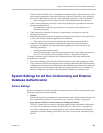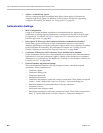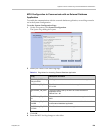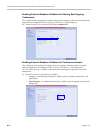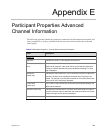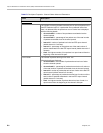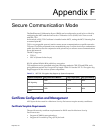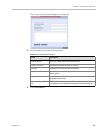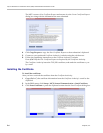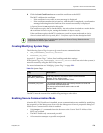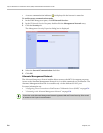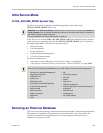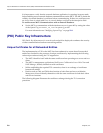
Polycom, Inc. F-1
Appendix F
Secure Communication Mode
The RealPresence Collaboration Server (RMX) can be configured to work in Secure Mode by
configuring the MCU and the RealPresence Collaboration Server (RMX) Web Client to work
with SSL/TLS.
In this mode, a SSL/TLS Certificate is installed on the MCU, setting the MCU Listening Port
to secured port 443.
TLS is a cryptographic protocol used to ensure secure communications on public networks.
TLS uses a Certificate purchased from a trusted third party Certificate Authority to authenticate
public keys that are used in conjunction with private keys to ensure secure communications
across the network.
The MCU supports:
• TLS 1.0
• SSL 3.0 (Secure Socket Layer)
SSL 3.0 utilizes 1024-bit RSA public key encryption.
TLS certificates can be generated using the following methods: CSR, PFX and PEM; each
giving different options for Encryption Key length. Table F-1 lists the SIP TLS Encryption Key
length support for the various system components.
Certificate Configuration and Management
All Polycom devices used in a Maximum Security Environment require security certificates.
Certificate Template Requirements
The specific security certificate requirements for RMXs used in Maximum Security
Environments are:
• Support of 2048-bit encryption keys.
• Support of Extended Key Usage (EKU) for both:
Table F-1 SIP TLS - Encryption Key Support by System Component
System Component Key Generation Method Key Length (bits) Key generated by
SIP Signaling
CSR 2048 MCU
PFX / PEM 1024 or 2048 User
Management
CSR 2048 MCU
LDAP



